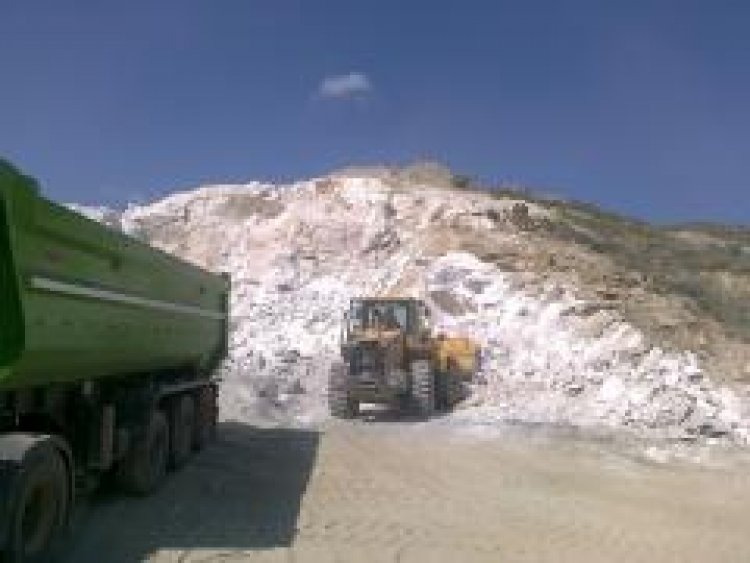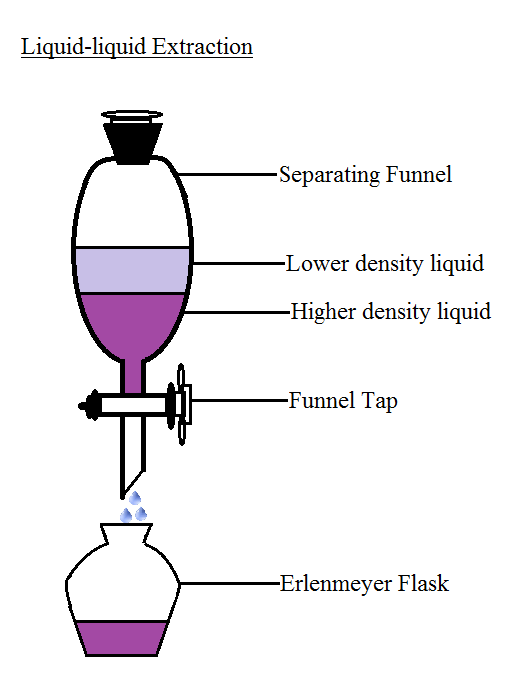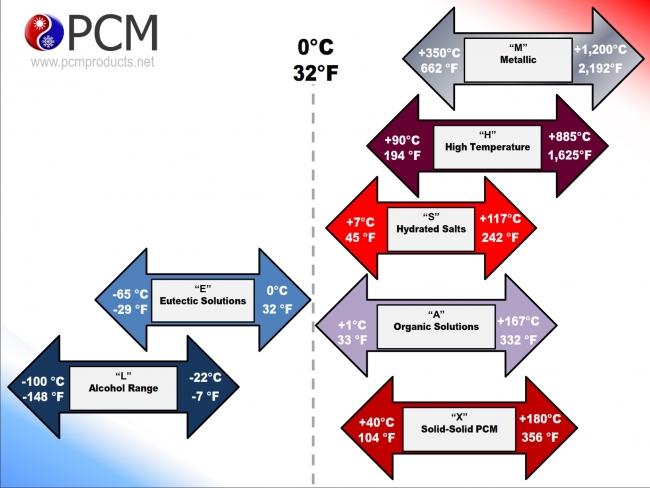Uses and Manufacture of Gypsum
Uses and Manufacture of Gypsum

Uses and Manufacture of Gypsum
Although considerable gypsum is used in the raw state, most gypsum is calcined before it is used. Calcining consists of heating the mineral to remove the chemically combined water that it contains. This process and its chemical reactions have been described briefly in this report. When water is added to calcined gypsum it soon recombines chemically to produce a material having cementitious properties. The mixture can be applied to a surface or molded to a shape and when it sets (when the calcined gypsum and water recombine), it hardens in the form and place in which it was applied.
Much of the following description of gypsum products comes from Ver Planck (1952).
Calcined Gypsum
Most calcined gypsum, known as gypsum plaster or plaster of paris, is used in the building industry.
Plaster Used in the Building Industry
Base-coat plasters—The first plaster applied to lath or any other type of surface is called base-coat plaster. There are four types of base-coat plaster; hard-wall plaster, sanded-gypsum plaster, wood-fiber plaster, and bond plaster. The type of base-coat plaster used depends upon the surface to which it is to be applied and upon the qualities desired in the plaster.
Hard-wall plaster is made by mixing gypsum plaster with sand. Vermiculite and perlite may be substituted for the sand as aggregate to make the plaster lighter and to give it greater insulating properties.
Sanded plaster differs from hard-wall plaster in that the sand is added at the place of manufacture rather than at its place of use. It has the same uses as hard-wall plaster.
Wood-fiber plaster utilizes wood as aggregate material. It is said to be stronger and harder and to have more fire resistance than hard-wall plaster.
Bond plaster is applied directly to concrete surfaces. It has the same rate of thermal expansion as concrete, so the possibility of cracks resulting from changes in temperature is reduced.
Finishing plaster—Finishing plaster is applied over the surface of base-coat plaster. It is mixed with lime before it is used. It is known either as gaging plaster or molding plaster. Gaging plaster is used on flat surfaces. Molding plaster is more finely ground than gaging plaster and is used for ornamental objects;
Keene's cement is a special type of finishing plaster. It is used either with or without lime. After it sets it has exceptional strength, density, and hardness, and can take a high polish.
Acoustical plaster is a finishing plaster that has a cellular structure and will absorb sound. It is mixed at the plant and requires only the addition of water when it is used.
Prefabricated gypsum products—Prefabricated gypsum products include gypsum wallboard, gypsum lath, gypsum sheathing, and gypsum tile. The first three are board products made on continuous-process machines. Gypsum tile is a molded product.
Gypsum wallboard is used for interiors. It is attached directly to wood framing or furring blocks and can be papered or painted. Wallboard is either 3/8 or 1/2 inch thick and is made in 4-foot widths and in lengths of 6 to 12 feet. Aluminum foil may be cemented to the back side for insulation.
Gypsum lath is of smaller dimensions, 4 feet long, 16 inches wide, and 3/8 to 1/2 inch thick. It is available either plain or with aluminum foil cemented on the back side for insulation.
Gypsum sheathing is made with water-repellent paper and is wind resistant. It is available in sheets 1/2 inch thick, 2 feet wide, and 8 feet long.
According to Ver Planck (1952, p. 94) "The principal uses for gypsum tile are for non-load-bearing interior partitions and for fireproofing structural steel. Gypsum tile is particularly adapted to buildings in which partitions must be frequently altered to meet changing requirements."
Standard shape for gypsum tile is 30 inches long and 12 inches wide. Gypsum tile is made either solid or hollow and is available in thicknesses of 2 to 6 inches.
Reinforced gypsum concrete—Reinforced gypsum concrete is used in making prefabricated units or is cast in place. In either process the forms are built with the reinforcing cables inside of them and the gypsum plaster is then poured into the forms. Relatively small amounts of gypsum have been used for this purpose.
Plaster Used Outside the Building Industry
Relatively small amounts of calcined gypsum are used outside the building industry. These plasters require special properties, therefore require special processing as well as extremely pure gypsum in their manufacture. These products are therefore expensive compared to building plaster.
Gypsum finds use in industry as casting plaster, as pottery plaster, as industrial and molding plaster, as dental and orthopedic plaster, and in the plate glass industry.
Casting plaster—Casting plaster is used for ornamentation and for statuary. It expands slightly when it sets, thus completely filling the mold in which it is cast.
Pottery plaster—Pottery plaster is used to make molds for ceramic material of all sorts. It must receive and transmit surface detail, retain dimensional accuracy, and absorb moisture.
Industrial and molding plaster—Industrial and molding plaster is used in making molds and patterns that require great dimensional accuracy. Plaster used in this capacity requires a special mode of manufacture.
Dental and orthopedic plaster—Gypsum is used to make dental and orthopedic plasters. The heat of hydration must be kept at a minimum in this type of plaster.
Plaster used in the plate glass industry—In the plate glass industry small amounts of plaster are used to hold glass while it is being polished. Plaster for this purpose must be finely ground and free from any impurities that would scratch the glass.
Raw Gypsum
Raw gypsum also finds considerable use. It is used in portland cement to retard its setting time. It is used as a soil additive for certain types of soils and crops. Raw gypsum, finely ground, is used as a filler in paper and paint, and as a carrier for insecticides. Raw gypsum finds further use as blackboard chalk, as dilutent in drugs, as an oxidizing agent in glass manufacture, and as a water conditioner in breweries. Dead burned gypsum is likewise used as a filler and as brewer's fixe.
Gypsum has found small use as a building stone; its solubility in water makes it undesirable for this purpose. Alabaster, a dense translucent form of gypsum, is used for ornamental stone.
Source of Sulfur
The sulfur shortage of the late 40's caused some study of gypsum as a possible source of sulfur. A process for making sulfur from gypsum is discussed further in this report.
Industrial Processing of Gypsum
Calcining
The application of heat to gypsum until it has lost part or all of its water of hydration is called calcining. The primary uses of gypsum depend upon the hydraulic properties of the products obtained by this treatment with heat, hence the calcining process is vital to the industry. Most gypsum is calcined in gypsum kettles or in rotary kilns.
According to Lippard (1949), a gypsum kettle consists of a cylindrical steel shell with a rounded bottom, which contains some kind of mechanically operated stirring device on the inside, and is heated from the bottom. Diameters range from 8 to 15 feet, and depths from 6 to 14 feet.
A rotary gypsum kiln is similar to those used in the cement industry. It consists of a cylindrical tube lined with fire brick. Sizes range from 70 to 155 feet long and 6 to 8 feet in diameter. The kiln is fired at one end and rotates slowly. It is supported at a slight pitch, and is fed from the high end, discharging from the low end.
Calcining in gypsum kettles is a batch process. Ground gypsum is charged into the top of the kettle when it is at a temperature of 110° C. (230° F.). The temperature is then raised slowly until it reaches about 120° C. (250° F.), at which point the gypsum seems to boil, owing to the steam being emitted from the hydrated calcium sulfate. The temperature remains the same until the boiling has subsided, and then begins to rise again. By the time a temperature of 150° to 165° C. (300° to 330° F.) is reached the boiling has ceased, indicating that the gypsum has been dehydrated to the hemihydrate. The temperature is allowed to rise slightly beyond this point and then the kettle is discharged into a hot pit where any uncalcined gypsum particles may still react.
Gypsum that is to be calcined in rotary kilns is crushed to H4-inch particles or smaller. The fine particles mayor may not be removed. Gypsum is fed into the high end and the kiln is fired from the low end (counter-How firing). The discharge temperature is 160° to 195° C. (320° to 380° F.). When Keene's cement is made in a rotary kiln, higher temperatures are necessary.
Manufacturing Special Types of Plaster
Special types of plasters used for industrial purposes require special processes in their manufacture, in order that they shall retain, after setting, the size and shape to which they are formed while plastic. Some of these products are calcined slowly in an autoclave under steam pressure. Resins, lime, and other materials are added to some to give the desired characteristics, and some require a certain amount of regrinding after calcining. Gypsum used in these products is necessarily extremely pure.
Manufacture of Prefabricated Gypsum Products
Gypsum board and other prefabricated gypsum products are made by a continuous process, whereby a mixture of calcined gypsum, or plaster of paris, and water is laid down between two layers of paper. Paper is fed from rolls approximately the same width as the desired width of the board, the plaster being laid on one layer and the other layer used as a cover for the plaster. The plaster is usually mixed with a fiber of some kind, and its setting time must be controlled carefully. In the process the edges of the paper are turned so that the board will have square corners, and provision is made to keep the board the same thickness throughout its entire width. The edges of the continuous strip are then taped. As the last step of the process, the continuous strip is cut automatically into the desired lengths.
Gypsum lath and gypsum sheathing are made by similar processes. Gypsum tile, on the other hand, is made in steel molds. The tile is cast on a mass-production basis, and it is made either hollow or solid.
Process for Manufacture of Sulfuric Acid from Gypsum
Neither sulfur nor sulfuric acid is made from gypsum in the United States but such a process has received much attention recently.
Valleroy (1952, p. 5-6) states:
"By adding silica and alumina, and coke to pulverized gypsum in the proper proportions a mix is obtained which upon calcination yields S02 and a sintered product which is suitable for the manufacture of cement. The chemical reactions involved are complex, but probably the CaSO4 is first reduced by the coke to calcium sulfide as shown by the following equations:
CaSO4 + 2 C = CaS + 2 CO2
CaS + 3 CaSO4 = 4 CaO + 4 SO2
CaO + (SiO2, Al2O3, Fe2O3) = Cement clinker
Overall Reaction
4 CaSO4 + 2 C + (x SiO2 · y Al2O3 · z Fe2O3) = 4 SO2 + 2 CO2 + 4 (CaO · x SiO2 · y Al2O3 · z Fe2O3)
In this simplified version of the kiln chemistry the sulfate first goes to the sulfide, which in turn reacts at higher temperature with more calcium sulfate to form CaO. The calcium oxide then reacts in the hottest zone with the metallic oxides to form the cement clinker.
"The history of the cement-sulfuric acid process goes back to the First World War when Germany, then cut off from her supplies of pyrites, turned to calcium sulfate as a source of sulfur".
Summary of Kansas Gypsum
Deposits
Gypsum deposits in Kansas are found primarily in rocks of Permian age. They may be divided roughly into two general classifications, those of small areal extent and those that cover a large area.
An example of a deposit of small areal extent is the deposit in the Easly Creek shale, in which gypsum is found only in a small area in Marshall County whereas the Easly Creek shale itself can be traced throughout the entire width of the state. Deposits of this type generally are found in the lower part of the Kansas Permian section.
An example of the widespread type of gypsum deposit is the Blaine formation, which can be traced a long distance both at the surface and in the subsurface. Gypsum deposits of this type are found in the middle and upper part of the Kansas Permian section.
Quality and Supply
The high-grade products manufactured for many years from Kansas gypsum are evidence of the quality of Kansas gypsum. Although mined at only a few localities, the deposits are extensive, and undoubtedly gypsum of the same quality as that already mined is widely distributed. No mined resource will last forever; nevertheless, the size of the Kansas gypsum deposits is such that production at the present rate of use can be maintained for a great many years.
Different types of products require different grades of gypsum in their manufacture. Such products as Keene's cement, orthopedic and dental plasters, statuary plasters, and finishing plasters require exceptionally pure gypsum. Other products, such as base coat plasters and many of the prefabricated gypsum products, require less pure gypsum. It is therefore significant that the Kansas gypsum production includes many of the high-grade products.
Transportation
The Kansas gypsum deposits are traversed by several major railroads, although not all areas are equally well served. Distance to market is a major factor in transportation. The deposits themselves cannot move, but the market can. Because of the close association of gypsum products with the building industry, the over-all increase in population and the westward shift of the center of population have increased the market and brought it closer to the Kansas gypsum deposits.
Production
Kansas gypsum production has increased during the last decade. The two main reasons for this are the increased demands for plaster from the building industry and other users, and the increases in the productive capacity of the gypsum mines and plants that have been made. As yet the increased demand for gypsum products has not resulted in any new gypsum-mining operations in the state.
Future Demand for Gypsum
As our population continues to increase, new buildings will have to be constructed for people to use; moreover, gypsum products are continually replacing other products used in the building industry. The demand for gypsum should therefore increase for many years to come. This means that the people of Kansas can look upon their gypsum deposits as an increasingly valuable resource.
ingredients for plastar mortar for buildings:
In addition to the basic ingredients of innovative masonry and plastering mortars (synthetic
gypsum, Plast Retard, tartaric acid), admixtures also include: river sand with a grain diameter of
0–2 mm, methylcellulose, lime flour, perlite, hydrated lime, and water.
























